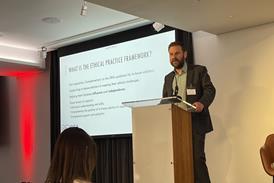In a rare and significant family law ruling, the courts have granted an application to terminate parental responsibility (PR), an outcome widely considered to be ‘once in a career’ by practitioners. The case offers valuable insights into how such exceptional applications can succeed and highlights potential areas for legislative reform.

Legal framework and precedent
The application was grounded in sections 3(1), 4(1)(a) and 4(2A) of the Children Act 1989, with significant reliance on key authorities, including Re P (Terminating Parental Responsibility) [1995] 1 FLR 1048, Re DW (Termination of Parental Responsibility) [2013] EWHC 854 (Fam), and X and Y [2023] EWHC 3170 (Fam). The successful argument centred on three crucial elements: demonstrating exceptional circumstances, establishing that removal was in the child’s best interests, and proving it was an appropriate step in regulating the child’s life.
Evidential considerations
Meeting the evidential threshold for terminating parental responsibility requires practitioners to demonstrate both exceptional circumstances and necessity. This case offers clear guidance on the evidence required.
Key elements that proved persuasive included criminal convictions, professional testimony documenting harm, and evidence of ongoing risk. Supporting witness statements and documentation demonstrated how retaining PR could enable continued controlling behaviour through its improper exercise in decisions about the child’s life.
While the welfare checklist is not strictly applicable in PR termination cases, it provided a helpful framework for the overall welfare evaluation. A particularly compelling argument was that the court would not have granted PR if it were a fresh application, given the circumstances. For lawyers considering similar applications, the following key points should be emphasised:
1. Careful analysis of case law and its application to specific circumstances;
2. Clear demonstration of exceptional circumstances;
3. Robust evidence showing why PR removal is both appropriate and necessary; and
4. Thorough investigation of family history to establish exceptional circumstances.
The case comes at a significant time of evolving judicial approaches to PR termination, particularly in cases involving domestic abuse. Recent case law shows courts developing a clearer understanding of domestic abuse and the impact of domestic abuse on families.
While recent amendments to the Criminal Justice Bill (May 2024) introduce automatic PR removal for child rapists upon sentencing, the case highlights significant gaps in the current framework. Arguably, this creates an artificial distinction, as there is clear authority where a person is convicted of rape of a child, but not other high-level crimes or where there has been significant and high-level domestic abuse.
A key reform consideration is the current requirement for victims to pursue separate civil proceedings after criminal cases conclude. This two-stage process places an unnecessary burden on victims when they have already been through so much. I would advocate for a wider scope of offences that could trigger automatic PR review, rather than requiring separate civil applications. Furthermore, I would identify an access to justice issue. Many people may not even know you can make an application to the Family Court to terminate PR. This suggests a need for better public awareness alongside procedural reform.
This case demonstrates that while PR termination remains exceptional, courts will grant such applications in appropriate circumstances. It is important to listen to clients. If someone seeks advice regarding the termination of PR, it is very easy to think that it is not something that is done regularly. However, there are cases that warrant it and where you will be successful.
Jaynie Broughton is a senior associate at Ramsdens Solicitors, Huddersfield. She prepared and managed the case with counsel representing at the final hearing





























1 Reader's comment